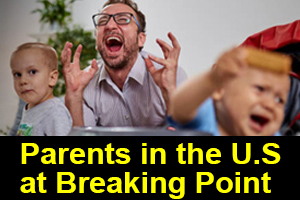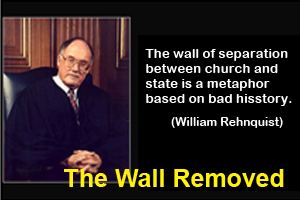

A Warning From History
A new biography of Hitler reminds us that there is more than one way to destroy a democracy. By Richard J. Evans
February 28, 2017
Aided by his talented propaganda chief Joseph Goebbels, Hitler not only flaunted his vulgarity and exploited tribal hatreds; he also lied and lied his way to success. The Jews, he argued, had stabbed the German Army in the back in 1918; the politicians of the other parties, he insisted, were hopelessly venal and corrupt and should be put in jail; the Nazi thugs who were condemned to death in 1932 for the ―Potempa murders‖ were victims of a ―monstrous blood-verdict‖; liberal newspapers that criticized Hitler were, as Goebbels put it, the ―Jewish lying press.‖
Few took Hitler seriously or thought that he would actually put his threats against the country’s tiny Jewish minority, his rants against feminists, left-wing politicians, homosexuals, pacifists, and liberal newspaper editors, into effect. Fewer still believed his vow to quit the League of Nations, the forerunner of the United Nations. But within a few months of taking office, he did all of these things—and much more.
Once in power, the Nazi regime was run exclusively by men: Only heterosexual white males, the Nazis thought, had the required detachment and lack of emotional connection to the issues at hand to make the right calls. Nazi propaganda mocked disabled people; within a few years, they were being sterilized and then exterminated. Hitler railed against the roving bands of criminals who were destroying law and order and called for the return of the death penalty, effectively abrogated under the Weimar Republic. Within a short space of time, the executions began again, reaching a total of more than 16,000 during his 12 years in power, while Germany’s prison population rocketed from 50,000 in 1930 to more than 100,000 on the eve of the war. Feminist associations were all closed down, the law forbidding homosexual acts between men was drastically sharpened, vagrants were rounded up and imprisoned, illegal Polish immigrants were deported. Germany pulled out of international organizations and tore up treaties with cynical abandon, dismantling or emasculating the structures of international cooperation erected after World War I and freeing the way for rogue states like Italy and Japan to launch their own wars of conquest and aggression. Ullrich tellingly quotes the Nazis’ triumphant declaration of ―our departure from the community of nations,‖ buttressed by Hitler’s assurance that he would ―rather die‖ than sign anything that was not in the interests of the German people. Hitler followed up on this commitment as well, though of course this proved not to be in the interests of the German people in the end.
The story of German politics between January 30 and July 30, 1933, is essentially the story of how the Nazis shut down the country’s democratic institutions, destroyed the freedom of its press and media, and created a one-party state in which opposition was punishable by imprisonment, banishment, or even death. It was Hitler’s ―first hundred days,‖ but the radical changes went on for longer and seemed terrifyingly easy to perpetrate.
There was nothing underhanded about these changes: Nazi leaders gave clear warnings about what they planned to do. But too few people saw them as a threat before they came to power. As
Goebbels said on February 10, 1933: ―If the Jewish press still thinks it can intimidate the National Socialist movement with veiled threats, if they think they can evade our emergency decrees, they should watch out! One day our patience will run out, and then the Jews will find their impudent, lying traps plugged.‖
Ullrich shows how newspapers were weakened by the economic pressure applied by the Nazi government. Editors were forced out, reporters were disciplined or imprisoned, and an increasing number of newspapers were shut down altogether, leaving only a captive press that confined itself to parroting the ―news‖ issued by the government in Goebbels’s daily morning press briefings. All that the few remaining decent journalists could do was to write in ―Aesopian‖ language, or in fables involving figures from the past like Genghis Khan; their only hope was that readers might get the message.
With the disappearance of a free, critical media and the subordination of law-enforcement agencies, the path was open for a massive expansion of political corruption at every level of the regime. Ullrich makes good use of recent research to underline the fact that the Nazi regime was, among other things, a kleptocracy; it was dependent on patronage and clientelism all the way down the line, since the formal procedures for state appointments and the rules of conduct for the occupants of high office were scrapped or bypassed in favor of a personal style of rule. The confiscation or forcible takeover of Jewish businesses lined the pockets of the party’s leaders; they also benefited from seizing the property of oppositional institutions like the socialistoriented trade unions, the Social Democratic Party, and many others.
Goebbels ensured that he was paid a vastly inflated salary as editor of a Nazi Party magazine, while Hermann Göring was given enough money by people seeking his patronage that he was able to buy and furnish five hunting lodges and to operate a private train. Hitler ostentatiously refused a salary as head of the German government, but he made sure that he earned royalties from the display of his face on postage stamps, which brought him enormous wealth. Well before the war, the Nazi leaders had become millionaires.
How did all this happen—and with so little opposition? What caused German democracy to react so toothlessly and to collapse so swiftly? Historians used to argue that German democracy had shallow roots, having come into existence with the Weimar Republic after the end of the First World War, and thus lacked any kind of tradition in a country whose basic political culture had always been authoritarian. But as the historian Margaret Lavinia Anderson and many others have shown, Germans were in fact already practicing democracy under the kaiser: Political parties were strong and becoming stronger; legislative institutions were gaining more power and influence; and a lively range of newspapers and magazines fostered vigorous public debate, despite the feeble attempts of the government to censor them.
By the time Hitler began his rise to power, the German state, reconstituted after the war, possessed robust constitutional and legal structures that were designed to frustrate any attempt to undermine or circumvent democracy. Judges were independent, as were police and prosecutors. In fact, early in 1933, the provincial Nazi government in Prussia—the state that covered over half of Germany’s territory and included more than half of its population—was declared unconstitutional by the Supreme Court. But the Nazis simply ignored this ruling, as they did the thousands of prosecutions brought by local and regional authorities against the storm troopers and others who had beaten up, imprisoned, and, in many hundreds of cases, murdered the party’s opponents.
The courts could safely be ignored, not least because Hitler’s government was able to govern by executive order after the burning down of the Reichstag, the national parliament building, on February 27–28, 1933. A lone, deranged Dutch anarchist was found guilty of setting the fire, but the Nazis portrayed it as a terrorist act by the Communist Party in a nationwide conspiracy to take power. The government declared a state of emergency, and Hitler exploited a provision in the Weimar Republic’s Constitution that permitted him to rule by decree in such times. Hitler would repeatedly renew the Reichstag Fire Decree all the way up to the end of his rule in 1945.
The Nazi seizure of power was carried out step-by-step through the first half of 1933, each step disguised as a seemingly legal act. On April 7, 1933, the government issued an executive order dismissing Jews and the regime’s political opponents from state employment. Many similar orders followed, culminating in a law to establish a one-party state and then, in the late summer of ’34, a law to declare Hitler dictator for life.
It was possible to do these things because Hitler had pushed a bill through the national legislature on March 23, 1933, that effectively disabled the parliament and devolved its power to make laws onto his cabinet. He was able to secure the necessary two-thirds majority by arresting Communist deputies who would have voted against it and by persuading the large Catholic Center Party to vote for it through a mix of promises and threats. Issuing from the government, these laws had the appearance of legitimacy, and almost no one stood up against them as they were put into effect.
Even after the legal profession and the judiciary had been purged of the Nazis’ opponents, there were still some judges who retained a modicum of honesty and independence. Hitler was furious when the Supreme Court, trying the alleged perpetrators of the Reichstag fire, acquitted all but one due to a lack of evidence. He rapidly set up a parallel apparatus of ―Special Courts‖ crowned by a national ―People’s Court,‖ all of them packed with committed Nazis. But the vast majority of the legal profession and law-enforcement agencies went along with the party anyway, even as the Nazis passed a raft of new treason laws and transferred the task of enforcing political conformity from the storm troopers and concentration camps to the police, the courts, and the prisons.
There were plenty of Germans who disapproved of these measures: Hitler didn’t attain supreme power on a wave of popular acclamation. On the contrary, in the last free elections of the Weimar Republic, the left-wing parties—the Communists and Social Democrats—won more votes and gained more seats in the national parliament than the Nazis did. But they were fatally divided, spending at least as much time fighting each other as they did trying to stop Hitler from establishing a dictatorship. Their rhetoric was feeble in comparison with his, their supporters less fanatical, their electoral propaganda less powerful and less sophisticated.
The concentration of political and legislative power in the cabinet didn’t last long. Beneath the surface appearance of normality, the cabinet was being marginalized as Hitler appointed his own cronies and disciples to new positions or pushed out his conservative coalition partners. The men who ruled Germany did not do so because they were constitutionally acting government ministers but because they were Hitler’s cronies: Goebbels, Göring, Heinrich Himmler, Robert Ley, and a handful of others.
Before long, the police and the Gestapo had been merged into Himmler’s SS, while regional Nazi Party leaders—Gauleiters—were bypassing the formally appointed state governors and administrators at every level. Senior civil servants were fired if they made any difficulties or were effectively supplanted by parallel appointees of the regime even if they conformed, as the vast majority of them did. German bureaucracy was famously punctilious, but under Hitler decisions were increasingly made on the hoof, by verbal order, leaving behind no paper trail.
Hitler made sure that the armed forces were on his side by giving them massive increases in funding and a huge new armaments program. In 1935, he introduced a draft that forced millions of young men into military service. His program for making Germany great again included a new aggressive attitude in international affairs. He sent the army into the Rhineland, occupied Austria, and annexed Czechoslovakia, before invading Poland and launching a European and, eventually, a world war. All along, the Soviet Union was targeted as Germany’s main external foe, even if, for tactical reasons, Hitler concluded a temporary nonaggression pact with Stalin in August 1939.
Hitler’s seizure and remaking of the state was buttressed by a wholesale reorganization of the education system and an effort to redefine German culture. Many, if not most, of Germany’s leading scholars and scientists were forced to leave the country, either because they were Jewish and so regarded as non-Christian foreigners, or because they were opponents of the regime (or, indeed, as in the case of Albert Einstein, both). The intellectual quality of German universities, which had led the world in research before 1933, plummeted. It has never fully recovered.
Hitler didn’t care. For him, education was a matter of practical instruction; it had nothing to do with the transmission of pure knowledge, let alone the traditional humanistic values that had underpinned the German educational system since the early 19th century. Before Hitler took over, a fifth of all university students were enrolled in the humanities; by the eve of the war, that portion had been cut in half, in a student body that was itself shrinking rapidly, from a total of 104,000 in all universities in 1931 to just under 41,000 in 1939. By this time, fully half of all students were taking degree courses in medicine, its importance boosted by the Nazis’ focus on racial research and eugenics.
The regime’s assault on culture extended to its policy toward the arts, which were ―coordinated‖ by Goebbels in a Reich Chamber of Culture that ended funding for modern painting, sculpture, and music, and banned allegedly subversive artists from working. Almost all of Germany’s major artists and writers left the country, turning it into a cultural desert. The mostly second-rate artists and writers who stayed behind had little choice but to propagate ―German‖ art and culture, and their work was often unimaginative, conformist, and dull. Theater and cinema put out trivial productions aimed at a broad popular audience: costume dramas, musicals, and other forms of light entertainment. Outright propaganda films were relatively rare, though these are the ones remembered today. There were no game shows or reality TV in Hitler’s day, but if there had been, Goebbels would have loved them.
The main objective of Nazi education and culture was not, however, to distract people from issues of political importance; it was to instill a new sense of patriotism. Pupils were made to salute the flag before school every morning, and the religious assembly that opened the school day was turned into a festival of obeisance to Hitler. All children had to join the Hitler Youth or its female equivalent, the League of German Girls, where they sang patriotic songs and performed military exercises and drills. History lessons were turned into a celebration of German heroes from the past. Geography was Nazified in order to justify German claims on other parts of
Europe. Math students were required to do calculations based on the number of ―racially inferior‖ people in the population.
Such exercises pointed to the fact that the regime constantly targeted minorities as a way of mobilizing popular approval and support. The Nazis may have dominated state power, but this wasn’t the kind of dictatorship that depended solely on repression, important though it was. Like many other modern dictatorships, it wanted to appear popular, not least because this strengthened its hand in negotiations with foreign powers. Regular elections and referendums were put to the voters, and they routinely delivered majorities of 99 percent in favor of whatever the government proposed—results achieved by depriving known or potential opponents of the vote, by manipulating the electoral process, and by directly or indirectly intimidating the great mass of people into supporting Hitler’s government.
A key part of the process was the vilification of political opponents. The Communist Party, a mass movement that had gained 100 seats in the national legislature in the last free elections of the Weimar Republic, was suppressed, accused of preparing a violent revolution. The moderately progressive Social Democrats, who enjoyed even more widespread support, were damned as ―November traitors,‖ a reference to the November revolution in 1918 that overthrew the kaiser’s regime. They were also maligned by the Nazis for having signed the ignominious peace treaty with the Allies at Versailles.
Nazi media and officialdom heaped abuse on democrats and harassed them at every turn. These opponents of the regime bore the brunt of the new treason laws from 1933 onward; in 1935 alone, there were some 23,000 political prisoners in Germany’s jails, and more than 5,000 people were being tried and condemned for treason every year.
In speech after speech, Hitler and the other leading Nazis attacked the Jews, who, they claimed, had orchestrated the efforts by these political parties to destroy Germany’s military prowess and cultural purity. Hitler was a conspiracy theorist without equal: Influenced by a bizarre forgery known as the Protocols of the Elders of Zion, he believed—perhaps as early as 1919, when he incorporated these views into his first-ever recorded speech—that there was a worldwide conspiracy of Jews, directed by a secret cabal probably located somewhere in Paris, to overthrow the German race, annihilate its culture, and render it impotent before its enemies. All Jews everywhere, no matter their political views, were part of this vast plot.
When the Nazis came to power, Jews made up less than 1 percent of the population in Germany, but the Nazis regarded them as a vast, powerful, and deadly threat. Hitler was convinced that without a proper sense of urgency, Germany would be eventually defeated, dominated, and very likely destroyed by them. This is what made anti-Semitism different from the other kinds of racial and religious prejudice held by the Nazis. The disabled and the mentally ill, ―Gypsies,‖ homosexuals, ―habitual criminals,‖ Jehovah’s Witnesses, and the other minorities targeted by Hitler were seen as obstacles to Germany’s renewal; they weakened the race and undermined its will to assert itself in the world. But the Jews were different: They were the ―world-enemy,‖ as Goebbels called them, the Weltfeind. Far more than an obstacle, they were an existential threat. This is why Hitler deprived them of German citizenship, robbed them of their livelihoods, stripped them of their possessions, forced as many of them as he could to emigrate by making their existence in Germany a living hell, and—when he had conquered areas of Europe that, unlike Germany, had very large Jewish populations—eventually murdered some 6 million of them.
Ordinary Germans were not wholly won over by such acts of persecution and destruction; only a minority applauded them. But the great mass of Germans did nothing to stop any of this. Civil courage was in short supply in a country cowed into submission by a ruthless dictatorship that knew no limits in its willingness to apply violence to those it hated. This included foreign states as well as domestic minorities. From the outset, Hitler intended a war of European conquest and, most likely, had that been victorious, world hegemony as well (as demonstrated by his megalomaniacal building plans for ―Germania,‖ a renamed Berlin, as world capital and intended permanent site of the Olympic Games after the war had been won).
With the support of the country’s military-industrial complex—grudging and cautious at first; then, after the defeat of Poland in 1939 and France in 1940, fulsome and enthusiastic—Hitler threw caution to the wind and launched a war that could only end in Germany’s defeat. His indifference to human suffering, and his willingness to devise and use weapons of mass destruction, knew no bounds. It is fortunate that he never got his hands on nuclear weapons, though they were in development in Germany’s laboratories well before the end of the war.
Violence indeed was at the heart of the Nazi enterprise. Every democracy that perishes dies in a different way, because every democracy is situated in specific historical circumstances. In Hitler’s case, as Ullrich shows, the essential context was supplied by World War I, an unprecedented conflict in which millions were killed and those who survived were plunged into a new, militarized, and brutalized world where violence in the service of politics became the norm.
Every political party in Weimar Germany had its paramilitary wing, ready to beat up and even kill its opponents—even the Social Democrats, whose Reichsbanner was committed to the defense of democracy. Yet with the unbridled brutality of the storm troopers, the Nazis outdid them all. The election campaign of June–July 1932 saw 105 people killed. This gave the Nazi seizure of power much of its historical distinctiveness and helped acclimatize the German people to the massive violence that underpinned it, with up to 200,000 opponents of the regime thrown into concentration camps in 1933 alone and more than 600 killed, even according to official figures.
For many, the legacy of World War I has long since faded away, and the destruction of Germany’s cities, the mass murder of Europe’s Jews, and the vast slaughter of World War II have acted as a sharp antidote to cultures of political violence and the militarization of party politics. Anyone who wants to use violence against his opponents to establish a dictatorship today would need to employ a different kind of force. Rather than sending armed and uniformed squads onto the streets, he or she would need to rely on harassment and persecution carried out by a captive media, and eventually, if opposition persisted, on the state power of the military and the law-enforcement agencies to crush it.
Above all else, Hitler was a media figure who gained popularity and controlled his country through speeches and publicity. Far from being a consistent and undeviatingly purposeful politician, he was temperamental, changeable, insecure, allergic to criticism, and often indecisive and uncertain in a crisis. There were many occasions in which he nearly came to grief, most notably as a result of his unconventional private life—such as when the suicide of his half-niece Geli Raubal, with whom he’d been having an affair in the early 1930s, threatened to destroy his reputation with the respectable classes of German society.
Ullrich convincingly links Hitler’s personality traits with political events. At key moments, such as the crisis of 1934, when the army threatened to move against him if he didn’t curb his violent, raucous supporters in the Brownshirt movement, Hitler hesitated and dithered before finally making up his mind. Ullrich corrects many misapprehensions and disposes of many myths. And he paints in the broader political context with great skill and the knowledge gathered over a lifetime of studying German history of the late 19th and early 20th centuries.
Over the years, there have been many biographies of Hitler, most of which have, in some way, underestimated his talents or underplayed his personal life. Alan Bullock’s Hitler: A Study in Tyranny (1952) was the first serious life of the German dictator, but it depicted him primarily as an opportunist with no consistent ideas or purposes except the gaining and wielding of power. In Joachim C. Fest’s Hitler (1973), he’s an ignorant, unintelligent, vulgar petty bourgeois whose rise to power owed much to his ability to articulate the resentments of his class at the coming of the modern world. For Ian Kershaw, whose two-volume biography currently holds the field, Hitler was almost an unperson, a man without a meaningful personality or private life, the creature of larger forces in German history. Others have seen him as a psychopath, a warped personality, a man who didn’t conform to the normal standards of human behavior. None of these pictures really grasps the man, however. Volker Ullrich provides a more complex and, perhaps for this reason, an even more troubling account of Hitler’s ascent to power. His Hitler is one whose personal life provides a key to understanding how he achieved and used supreme power, and his biography—by providing the wider context of German society and politics in which Hitler ascended—also attempts to explain why so many Germans were willing to allow him to do so.
Everyone concerned about democracy should read this book. For the Nazis were ―a warning from history‖ (to quote the title of the still-unsurpassed 1997 television history by Ian Kershaw and Lawrence Rees, now being rebroadcast in the United Kingdom as a response to current political events), and we would all do well to heed it.







